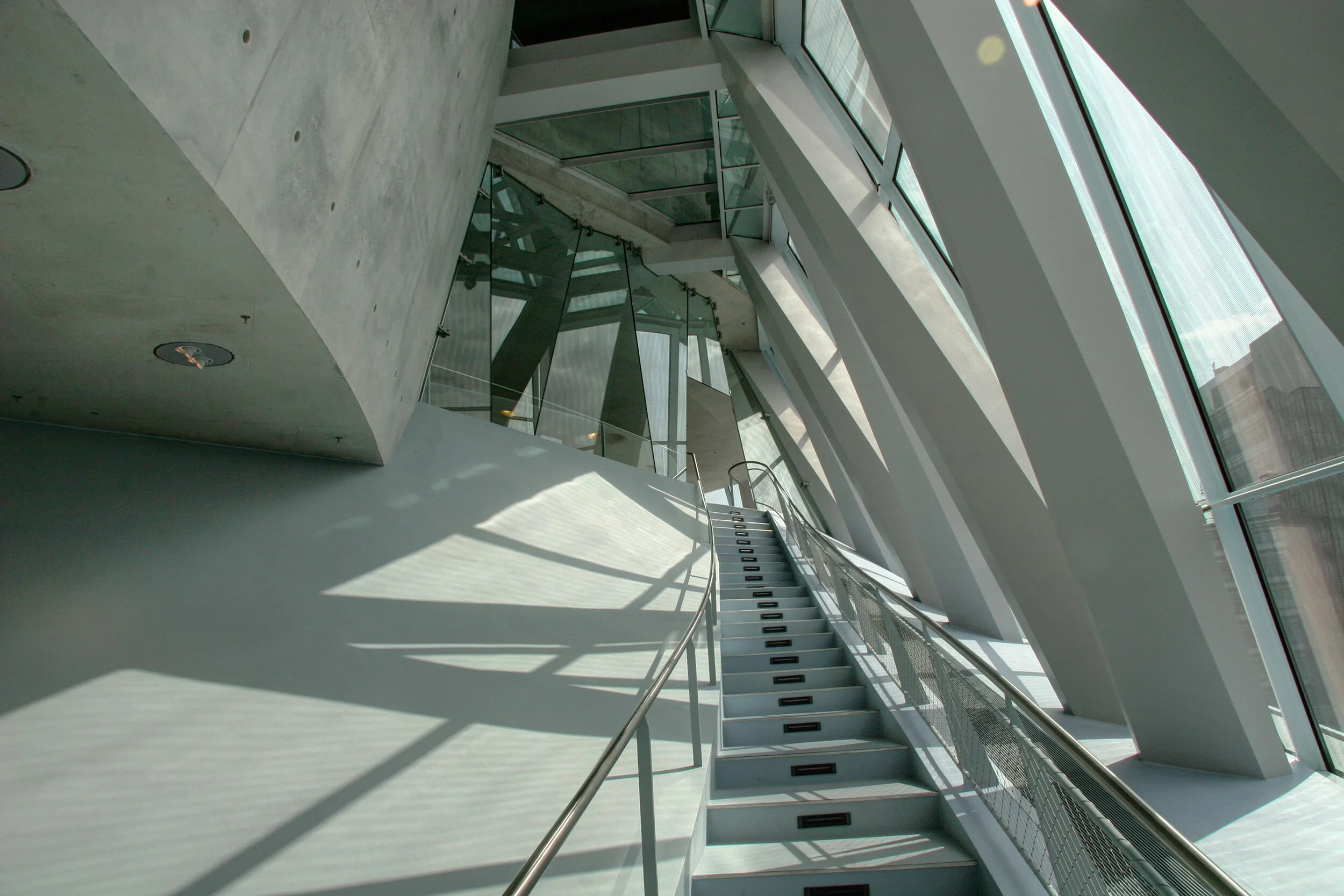
Page 3 of 12
Stuttgart, Germany
Heaven on earth with an onion slice
A recently opened (and thoroughly impressive) new Mercedes Benz Museum was the lone reason I thought it was a good idea to go to Stuttgart. Designed by UN Studio (the same firm that designed Rotterdam's Erasmus Bridge on Page 1), its interior plan looks eerily like Mercedes' inescapable three pointed star, although the interior experience is admittedly more like driving around a generously banked test track than it is walking on a logo.
The museum itself is actually a bit confusing to get around. Visitors enter through way cool Star Trek elevators (the interior slit elevator cab windows need to be experienced to be believed) and find themselves at the start of a descending ramp timeline (the Myth). The wrench in such an otherwise simple circulation is that there is then also a not quite parallel vertical exhibition that exhibits vehicles by type (the Collection), in order to see both Myth and Collection you find yourself doing a lot of double tracking, a confusion which is encouraged by a floor numbering system that allows floors 5, 4 and 3 to be on the same floor at the same time. Not the end of the world but certainly annoying at times.
All visitors are also saddled with an audio tour provided in their own native language, as long as that language is either German or English. The audio tour kicks on automatically as you begin to enter different areas, providing an overview and encouraging you not to actually read a lot of the similarly worded exhibit text.
Both one of my favorite pictures and one that is truly more indicative of the visitor experience than any of the other slides, this is a stair between levels that shows the floors becoming walls and the walls becoming floors as the stair struggles to figure out whether its going up or down…
While I am not a huge Mercedes fan (although I did admittedly enjoy the time I rented one to drive across the Alsace a few years back), the exhibits do their best to cover everything between horse and buggies through IndyCars. The timeline also makes a point not to hide any of the bad times, creating the most interesting although uncomfortable part of the tour. It seems that Mercedes Benz built weapons and used forced (basically slave) labor during World War 2, although it then points out how afterwards settlements were reached with the forced workers- leaving the unmistakable impression that if you ever find yourself forced against your will to work for a German manufacturer, Mercedes Benz is clearly the way to go.
While I am not a huge Mercedes fan (although I did admittedly enjoy the time I rented one to drive across the Alsace a few years back), the exhibits do their best to cover everything between horse and buggies through IndyCars. The timeline also makes a point not to hide any of the bad times, creating the most interesting although uncomfortable part of the tour. It seems that Mercedes Benz built weapons and used forced (basically slave) labor during World War 2, although it then points out how afterwards settlements were reached with the forced workers- leaving the unmistakable impression that if you ever find yourself forced against your will to work for a German manufacturer, Mercedes Benz is clearly the way to go.

